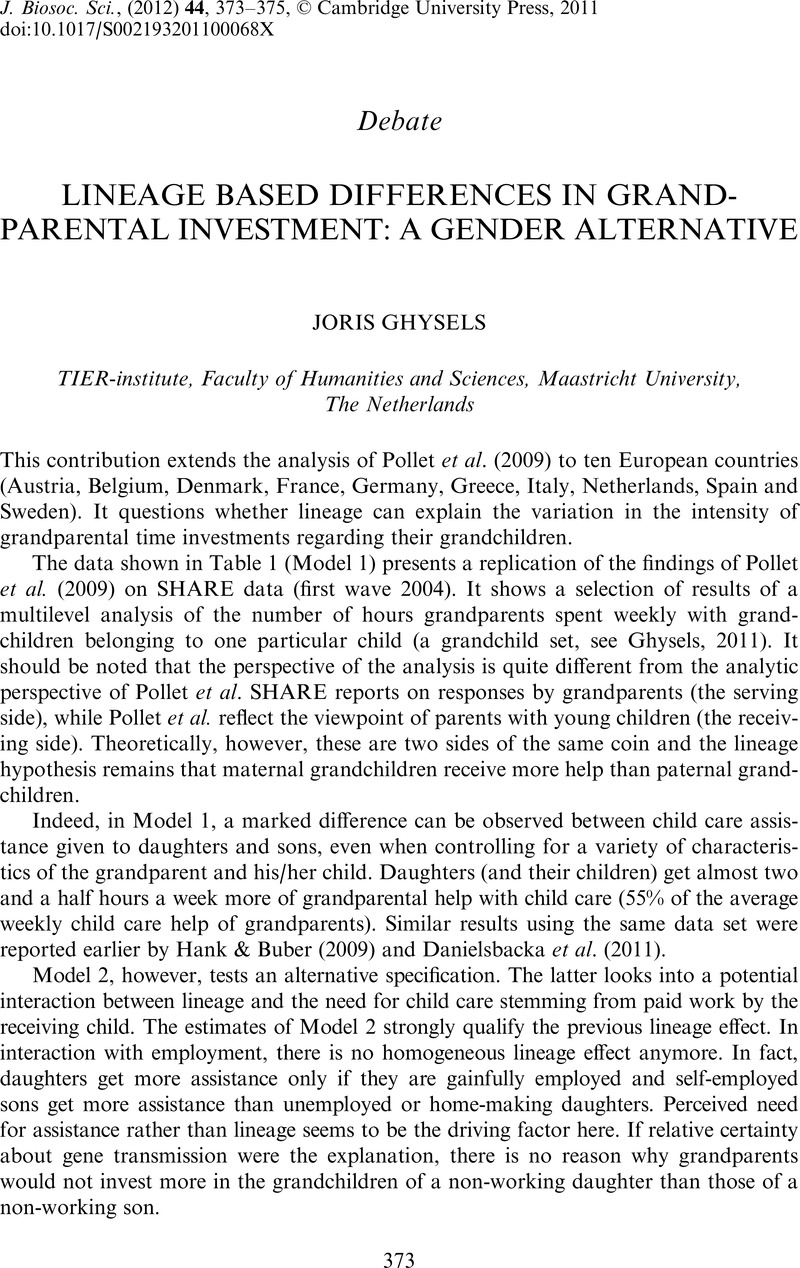Crossref Citations
This article has been cited by the following publications. This list is generated based on data provided by Crossref.
POLLET, THOMAS V.
NELISSEN, MARK
and
NETTLE, DANIEL
2012.
A ‘GENDERED NEED’ EXPLANATION DOES NOT FULLY EXPLAIN LINEAGE BASED DIFFERENCES IN GRANDPARENTAL INVESTMENT FOUND IN A LARGE BRITISH COHORT STUDY.
Journal of Biosocial Science,
Vol. 44,
Issue. 3,
p.
377.





